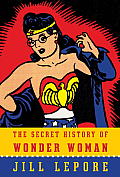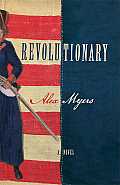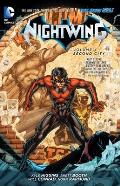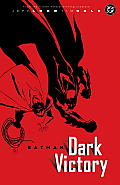Kyle Higgins appears to be wrapping up his current work on the Dick Grayson character. The latest stories in
Batman Beyond 2.0, including an upcoming chapter titled “The Final Fate of Dick Grayson,” have Alec Siegel’s name as co-writer, and Siegel’s the one signing the footnoted cross-references. (Wasn’t that once the editor’s prerogative?)
Therefore, even though Higgins is back on the Batman beat as one of the writers scripting the final stretch of
Batman Eternal, and though he says he’ll likely return to Dick Grayson someday, his recent
interview with Crave Online reads like a farewell retrospective:
Your work on Nightwing really expanded the character. Was everything in place from day one, or did it come as you wrote the story?
I had an idea from the start, but I learned so much along the way. I remember having a conversation with one of my best friends, who is an incredibly talented writer who works in TV and did some Gates Of Gotham with me [Ryan Parrot]. We said, when you boil Dick Grayson down, how do you describe him in a few sentences. What is his core? We did it as an exercise with Superman, Spider-Man, Batman, and boiled all them down to their central drive.
With Dick Grayson I couldn’t do it, I had a really hard time with it. I realized that was a problem. I know who the character is, but I can’t fully articulate why I love the character. It wasn’t until I settled on this idea that he grew up in a circus, so he’s all about catching people when they fall. That’s actually the final line of my final issue. I sat on that for over a year.
Dick seems more involved with the people he’s helping.
It’s about the empathy for who he saves. Every superhero, in one way or another, does it for the good of so-and-so, and they want to help people, but Dick Grayson more than all is about the people. He’ll save you from a mugger, tie your shoe and buy you a beer.
Dick and Bruce are very similar, but very different. Why?
Well, in a weird way one is more focused on his parents’ deaths, and the other is more focused on his parents’ lives. To me Dick and his Nightwing persona is more about spectacle than Batman. He’s sailing between buildings, it’s a performance and people can see him. He’ll operate in the daylight. It’s much more about the circus life and how he was brought up and the show. Nobody wants a brooding mopey Dick Grayson.
Another reason why the grim, one-eyed Dick Grayson in
Batman Beyond 2.0 is a signal of a dystopic future.
Higgins continues to work on
C.O.W.L., his story of a superhero labor politics in post-WW2 Chicago, for Image. We have yet to see the equivalent of Dick Grayson in those comics, but one did appear in Higggins’s student film, apparently set in the same world. And, to be frank, that character’s kind of mopey.



















